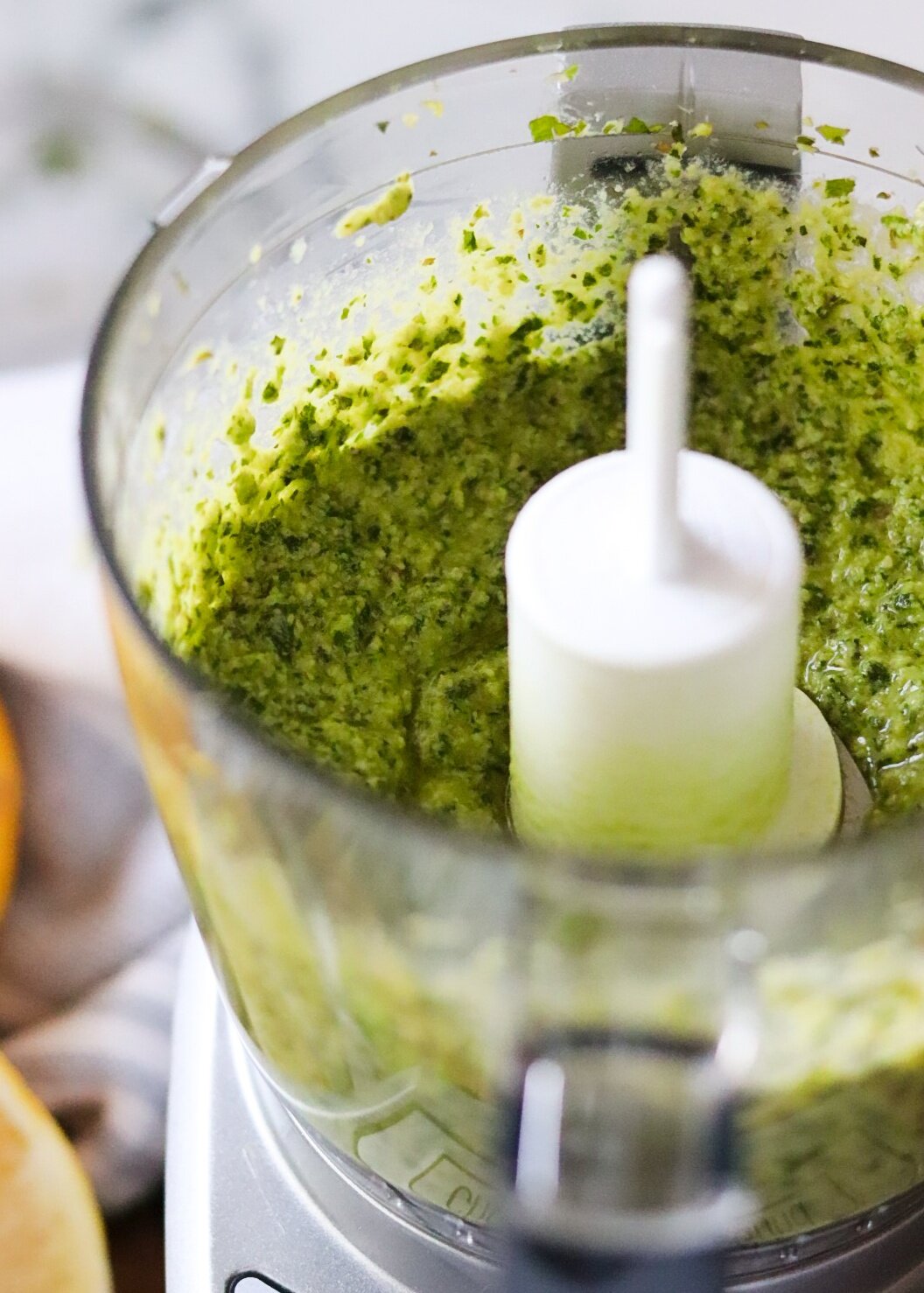
If you have an abundance of fresh oregano leaves in your garden and you’re searching for a way to put them to good use, look no further! Making this fresh pesto recipe is a great way to up a bunch of oregano stems. Not only does this pesto recipe pack so much flavor, it’s so easy to make. Find all the details on the recipe card below.
What is Pesto
Traditional basil pesto is a versatile Italian sauce originating from Genoa, typically made with fresh basil, garlic, a little bit of pine nuts, Parmesan cheese, and olive oil. This vibrant green condiment offers a rich, herbaceous flavor with a hint of nuttiness and can be used as a pasta sauce, spread, or drizzle to enhance a wide range of dishes. Its simplicity and vibrant taste make it a beloved addition to Mediterranean cuisine and a popular choice for elevating the flavor of various dishes.
Fresh Oregano Pesto Is So Easy
In this recipe, I’ll guide you through creating a delicious and versatile fresh oregano pesto. Packed with the vibrant flavors of fresh herbs, pine nuts, Parmesan cheese, and extra virgin olive oil, this pesto sauce will elevate any dish it touches. Whether you’re a fan of traditional pesto or seeking a new flavor experience, this recipe is sure to earn a five-star rating.
You can also easily make a vegan version! Simply swap out the Parmesan or pecorino cheese with nutritional yeast!
Why You’ll Love This Oregano Pesto
With this easy-to-follow fresh oregano pesto recipe, you can transform an abundance of oregano leaves from your garden into a delectable sauce that will add a burst of flavor to your favorite dishes. Whether you’re a pesto enthusiast or new to the world of homemade sauces, this recipe promises to earn a high rating on your culinary scale. The combination of fresh oregano, basil, pine nuts, and Parmesan cheese, all bound together by extra virgin olive oil, creates a pesto that will be a true labor of love from your garden to your plate. So why not take advantage of your herb garden’s abundance and make this recipe!
Types of Oregano
Oregano, a fragrant and flavorful herb, exists in several distinct varieties, each offering its unique characteristics. Common oregano (Origanum vulgare) is the classic choice, known for its robust, earthy flavor, and is a staple in Italian and Mediterranean cuisines. Greek oregano (Origanum heracleoticum) is renowned for its bold taste and often preferred for its intensity. Mexican oregano (Lippia graveolens), while not botanically related, shares a name due to its similar flavor profile, featuring citrusy and spicy notes. Marjoram (Origanum majorana) is a close relative, boasting a sweeter and milder taste, ideal for delicate dishes. Whether you’re spicing up pizza or seasoning soups, there’s an oregano variety to suit your culinary needs.
Ingredients for Oregano Pesto
- 2 cups fresh oregano leaves
- 1 cup fresh basil leaves
- 1/4 cup pine nuts
- 1/4 cup grated Parmesan cheese (or vegan cheese for a dairy-free option)
- 2 garlic cloves
- 1/2 cup extra virgin olive oil
- 1 tablespoon lemon juice
- Sea Salt and black pepper to taste
How to Make Oregano Pesto
-
Gather your fresh oregano leaves, basil leaves, pine nuts, Parmesan cheese, garlic cloves, extra virgin olive oil, and lemon juice. The key to the best flavour is using high-quality ingredients.
-
In a food processor, combine the fresh oregano leaves, basil leaves, pine nuts, Parmesan cheese, and garlic cloves. Pulse until the ingredients are finely chopped and well combined. for a chunkier pesto, simply pulse until you achieve desired consistency.
-
Slowly drizzle in the extra virgin olive oil while the food processor is running. This will help emulsify the sauce and create a smooth consistency. Continue processing until the pesto reaches your desired texture.
-
Add the lemon juice, salt, and pepper to taste. Give it a final pulse to incorporate the flavors evenly.
-
To store the fresh oregano pesto, you can use ice cube trays. Fill each cube with a tablespoon of pesto sauce and freeze. Once solid, transfer the pesto cubes to a ziplock bag and store in the freezer. This allows for convenient portioning whenever you need a burst of flavor in your dishes.
-
To enjoy your pesto, simply thaw a cube or two, toss it with cooked pasta, and savor the incredible flavors. Alternatively, use it as a spread on sandwiches, a dip for vegetables, or a marinade for grilled meats or vegetables.
How to Serve Oregano Pesto
Oregano pesto can be served in various ways to enhance the flavor of a wide range of dishes. The following recipes use a classic basil pesto, but they are equally as delicious with this Oregano Pesto recipe!
Here are some other ideas on how to serve oregano pesto:
Pasta Sauce
Toss cooked pasta with oregano pesto to create a simple and flavorful pasta dish. You can use any type of pasta, such as spaghetti, penne, or linguine. Add some freshly grated Parmesan cheese and a drizzle of olive oil for an extra touch.
Spread or Dip
Use oregano pesto as a spread on sandwiches, wraps, or bruschetta. It adds a burst of herbaceous flavor and works well with various fillings. You can also serve it as a dip for fresh vegetables, crackers, or breadsticks. Try this Chicken Pesto Wrap!
Pizza Topping
Instead of traditional tomato sauce, spread oregano pesto on pizza dough as a base. Top with your favorite ingredients, such as cheese, tomatoes, olives, or grilled vegetables, and bake until the crust is golden and the toppings are cooked to perfection. Try this Pesto Pizza Recipe!
Grilled Meats or Seafood
Use oregano pesto as a marinade or sauce for grilled meats or seafood. Brush it onto chicken breasts, steak, shrimp, or fish fillets before grilling for tons of flavor. You can also serve a dollop of pesto alongside grilled dishes as a condiment.
Roasted Vegetables
Toss roasted vegetables with oregano pesto after they come out of the oven. It will add a vibrant and aromatic element to the dish. Try it with roasted potatoes, zucchini, eggplant, or bell peppers.
Soup Garnish
Add a spoonful of oregano pesto to soups just before serving. It can enhance the flavor of vegetable soups, tomato soups, or even creamy soups like potato or cauliflower.
Salad Dressing
Incorporate oregano pesto into homemade salad dressings. Whisk it together with olive oil, lemon juice or vinegar, salt, and pepper for a herbaceous dressing to drizzle over leafy greens and fresh tomatoes. It works well with green salads, grain salad, or even pasta salads.
Bread or Focaccia Flavoring
Mix oregano pesto into bread dough or sprinkle it on top of homemade focaccia before baking. It will infuse the bread with a delightful herbal taste and aroma.
Storing Oregano Pesto
How to store Oregano Pesto In the Fridge
To store oregano pesto in the fridge, follow these steps:
-
Transfer the oregano pesto to a clean, airtight container. Ensure that the container is suitable for storing food and has a tight-fitting lid.
-
Before sealing the container, press a piece of plastic wrap directly onto the surface of the pesto. This will help create a barrier between the pesto and air, preventing oxidation and maintaining its vibrant green color.
-
Seal the container tightly with the lid to prevent any air from entering. Make sure the lid is secure to maintain the freshness of the pesto.
-
Label the container with the date to keep track of its freshness.
-
Place the container in the refrigerator, ideally in the coldest part, such as the back of the fridge or the vegetable crisper drawer. The cooler temperature will help slow down the growth of bacteria and preserve the pesto for a longer time.
How Long Does Homemade Pesto Last in the Fridge?
Homemade pesto typically lasts for about 1 to 2 weeks when stored in the refrigerator. However, the exact shelf life can vary depending on the ingredients used and the specific recipe.
How to Freeze Oregano Pesto
To freeze oregano pesto, follow these steps:
- Prepare the oregano pesto according to your preferred recipe.
- Transfer the freshly made pesto to clean, airtight containers. Leave some headspace at the top of each container as the pesto will expand slightly during freezing.
- Smooth the surface of the pesto in the containers with the back of a spoon or a spatula.
- Drizzle a thin layer of olive oil over the surface of the pesto. This will help create a protective barrier and prevent freezer burn.
- Seal the containers tightly with their lids.
- Label the containers with the date and contents for easy identification.
- Place the containers in the freezer, ideally in a flat position to maximize space and ensure even freezing.
How long can you freeze pesto?
By following these steps, your oregano pesto can be stored in the freezer for up to 3 months. When you’re ready to use the frozen pesto, remove it from the freezer and let it thaw in the refrigerator overnight or for a few hours. Alternatively, you can thaw it at room temperature for a quicker thawing process.
After thawing, give the pesto a stir to incorporate any separated oil, and it will be ready to use in your favorite recipes. Remember to use the thawed pesto within a few days and always check for any signs of spoilage before consuming.
Variations of this Fresh Oregano Pesto Recipe
Here are a few different variations to this recipe! I love to reduce waste as much as I can, so get creative and use whatever you have leftover in your fridge and pantry!
-
Cherry Tomato and Pumpkin Seed Pesto: Enhance your oregano pesto with the sweet tanginess of cherry tomatoes and a nutty crunch from pumpkin seeds. Blend fresh oregano, cherry tomatoes, pumpkin seeds, garlic, Parmesan cheese, and olive oil until smooth. Season to taste with salt and pepper. Serve over pasta or grilled chicken for a burst of summer flavors.
-
Lemon Balm and Thyme Infused Oregano Pesto: Give your oregano pesto a refreshing twist by incorporating lemon balm and fresh thyme. Combine oregano, lemon balm, thyme, pine nuts, garlic, Parmesan, and olive oil in a food processor. Finish with a squeeze of lemon juice for a zesty kick. Spread it on crostini or use it as a marinade for fish or seafood.
-
Sunflower Seed and Mixed Herb Pesto: Create a versatile herbaceous pesto by mixing fresh oregano with your favorite herbs, such as basil, parsley, and cilantro. Blend the herbs with sunflower seeds, garlic, Pecorino Romano cheese, and olive oil. Adjust the herb ratios to your liking for a personalized flavor profile. Toss with cooked pasta, or use it as a dipping sauce for bread.
-
Roasted Cherry Tomato and Oregano Pesto: Roast cherry tomatoes until they caramelize and intensify in flavor. Combine them with fresh oregano, roasted garlic, toasted pumpkin seeds, and a touch of lemon zest. Blend with olive oil and season with salt and pepper. This pesto is perfect for dressing roasted vegetables or as a condiment for sandwiches.
Feel free to experiment with these variations, adjusting the ingredient quantities to suit your taste preferences. Enjoy the diverse flavors each one brings to your dishes!
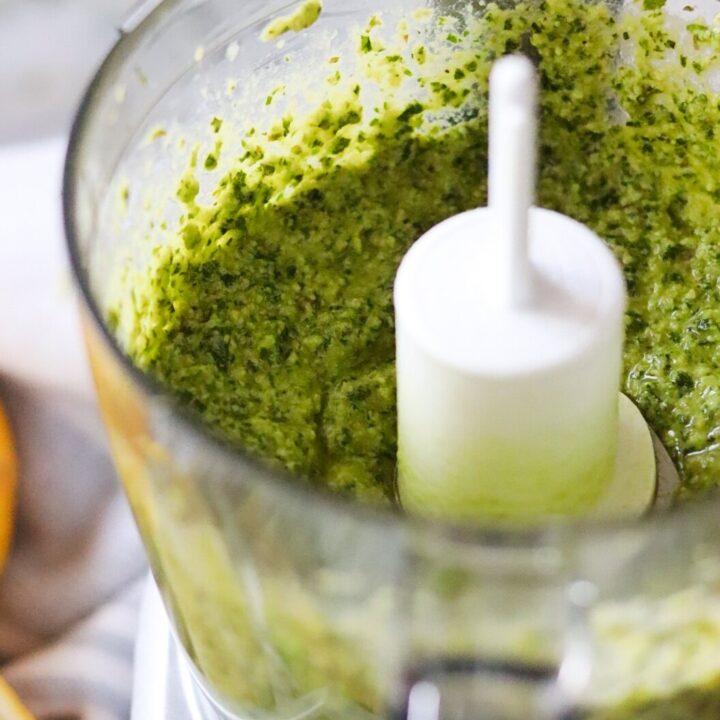
The Freshest Oregano Pesto Recipe
Ingredients
- 2 cups fresh oregano leaves
- 1 cup fresh basil leaves
- 1/4 cup pine nuts
- 1/4 cup grated Parmesan cheese (or vegan cheese for a dairy-free option)
- 2 garlic cloves
- 1/2 cup extra virgin olive oil
- 1 tablespoon lemon juice
- Salt and pepper to taste
Instructions
- Gather your fresh oregano leaves, basil leaves, pine nuts, Parmesan cheese, garlic cloves, extra virgin olive oil, and lemon juice. The key to the best flavour is using high-quality ingredients.
- In a food processor, combine the fresh oregano leaves, basil leaves, pine nuts, Parmesan cheese, and garlic cloves. Pulse until the ingredients are finely chopped and well combined.
- Slowly drizzle in the extra virgin olive oil while the food processor is running. This will help emulsify the sauce and create a smooth consistency. Continue processing until the pesto reaches your desired texture.
- Add the lemon juice, salt, and pepper to taste. Give it a final pulse to incorporate the flavors evenly.

Christopher is a food and lifestyle expert, recipe developer and the content creator behind May Eighty Five. With years of experience in the kitchen, he also shares tips, tricks and how to’s that he has learnt over the years. Every week, he shares quick, simple and mostly healthy recipes along with some home and entertaining tips. You will find flavorful cocktails, delicious appetizers, tasty mains and some indulgent desserts. As a home decor enthusiast, he also likes to share simple DIY projects and simple tips for a beautiful home.


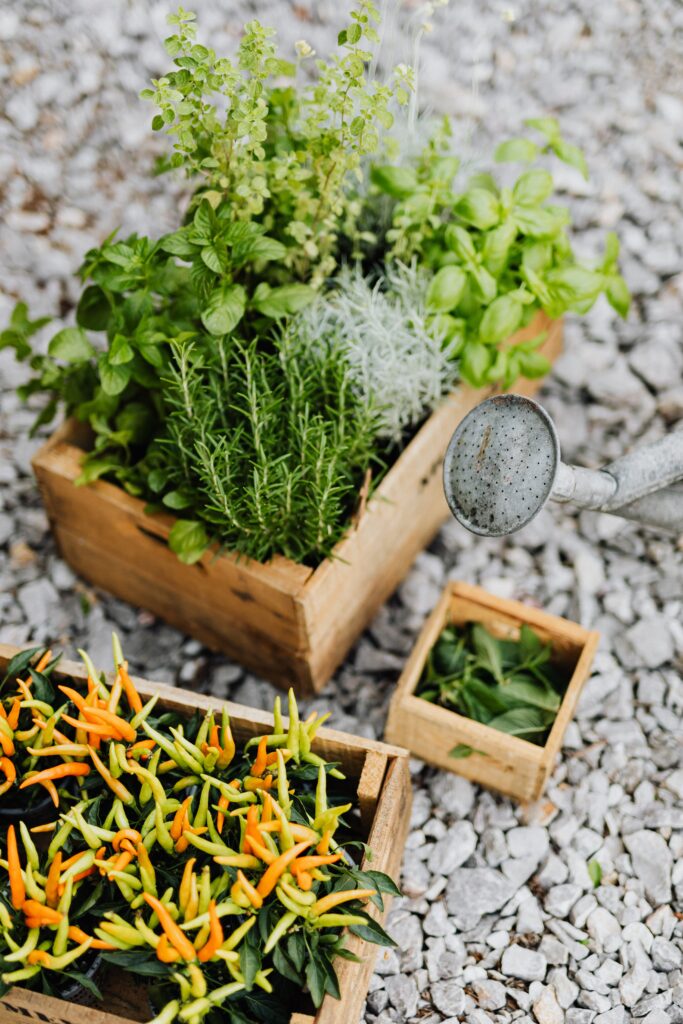
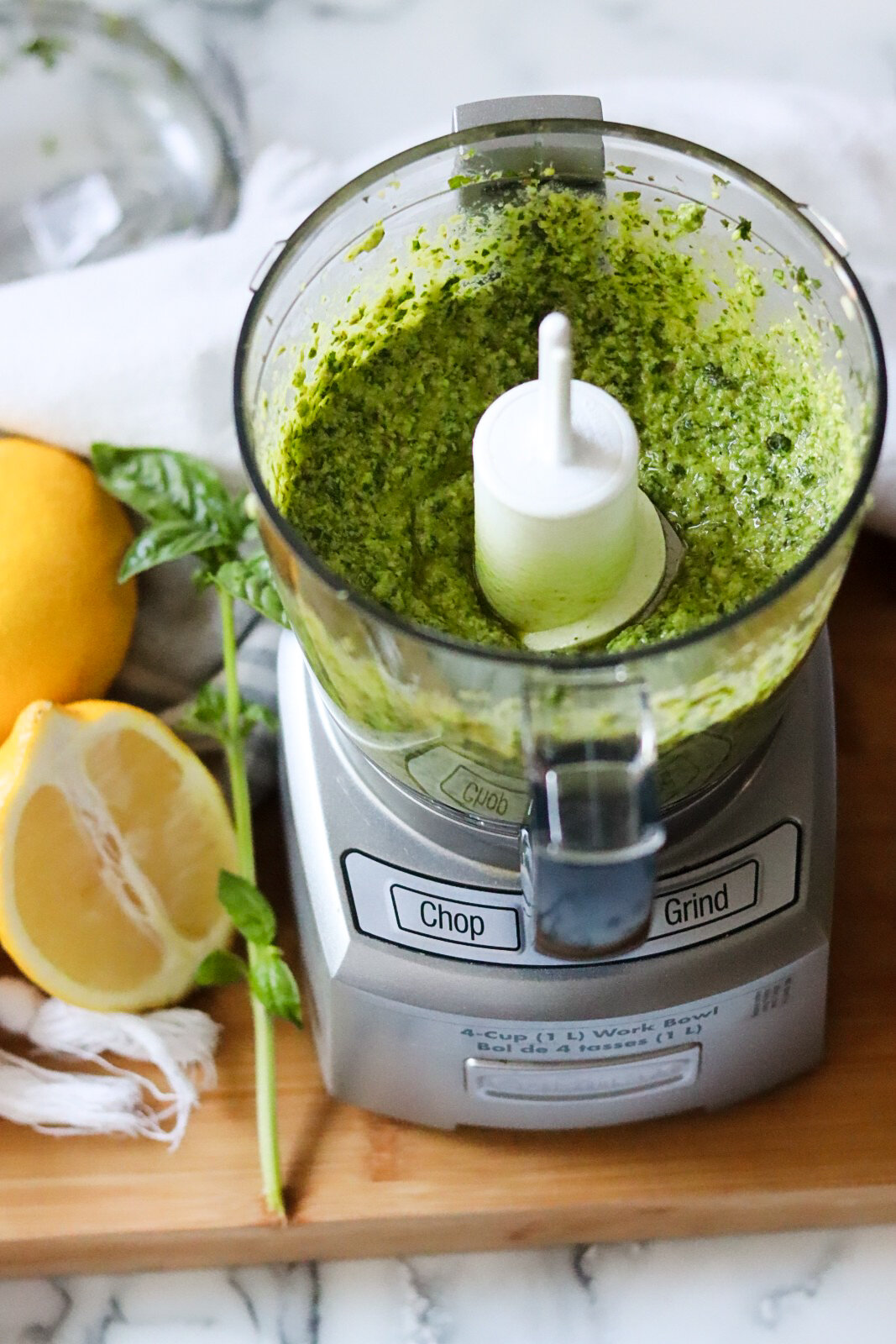
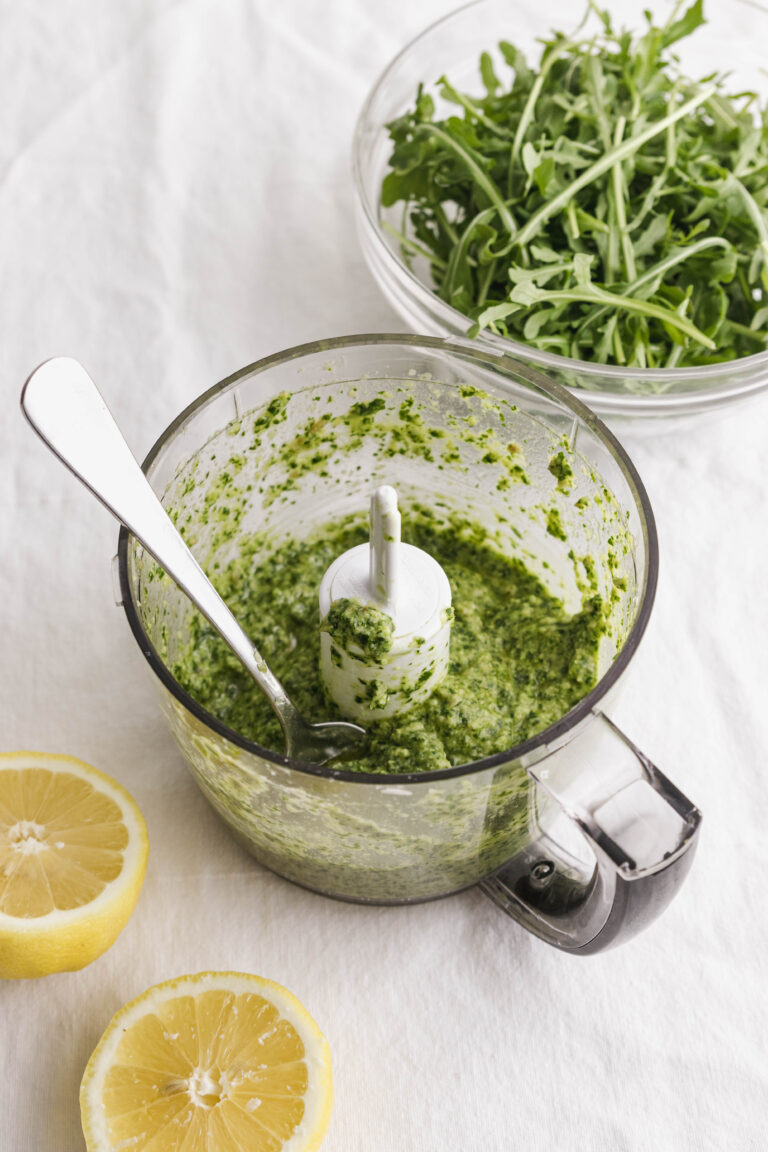
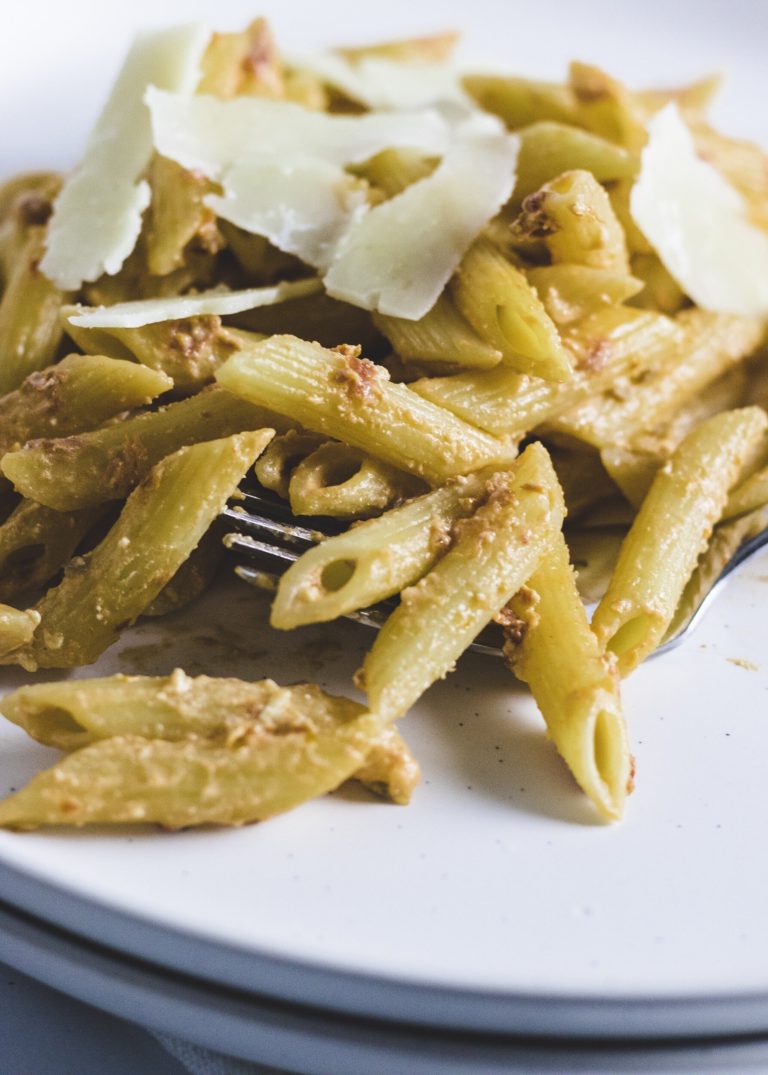
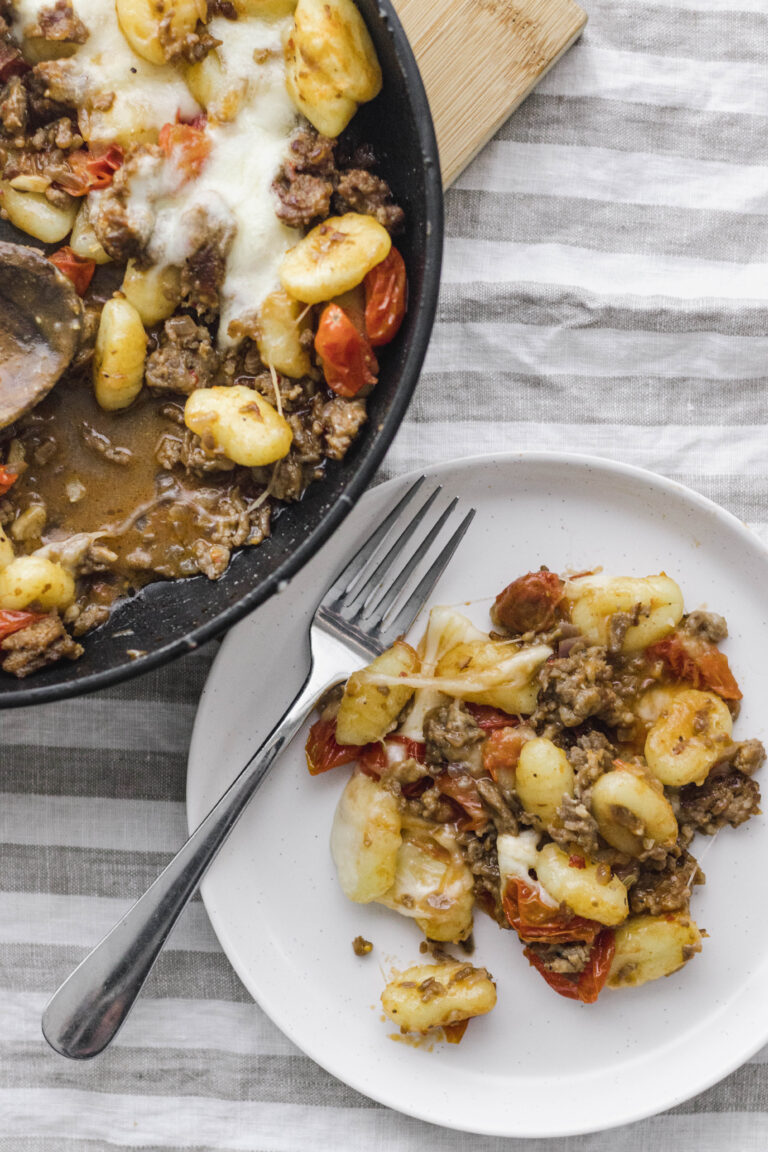

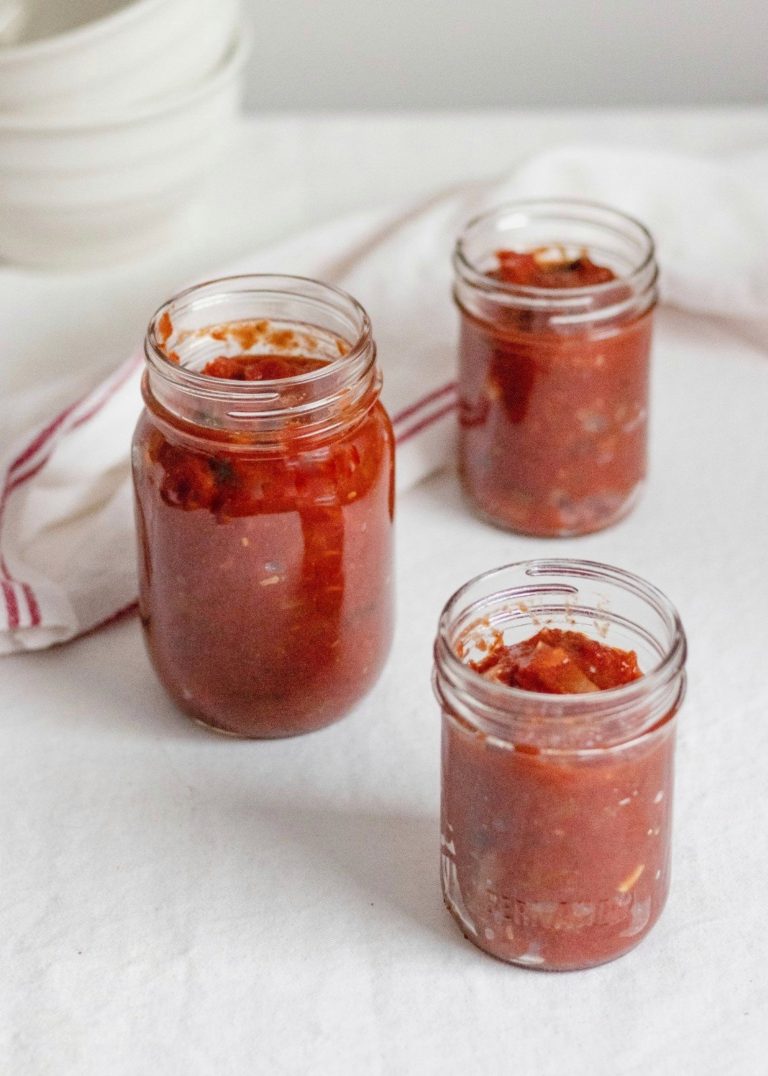

2 Comments
Comments are closed.